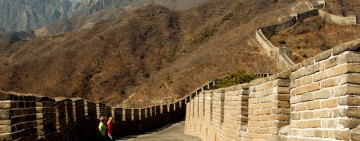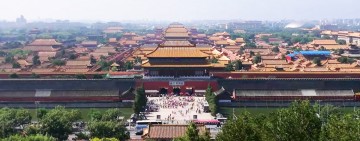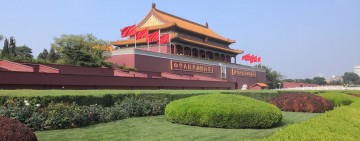The Top 20 Attractions in China: Part One
Last updated on 2019-04-20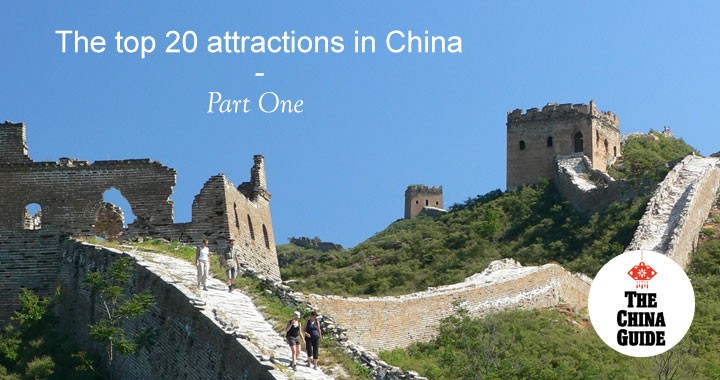
We’ve already blogged about how to plan your very first trip to China but if you’re now wondering what to include in your trip, we are here to help with a handpicked list of the 20 most popular attractions in China.
The Terracotta Army, Xi’an
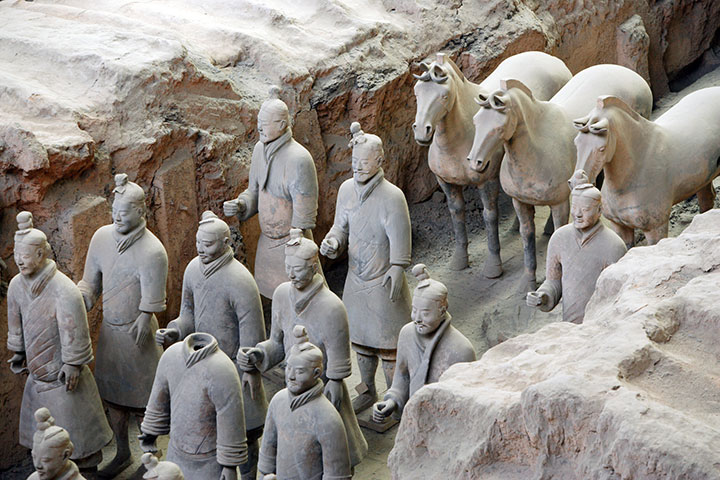
This impressive army of more than 6,000 sculptures was built sometime around the late third century BCE and remained hidden until 1974 when local farmers discovered them. The statues were created in order to protect Qin Shi Huang, the first emperor of China, in his afterlife. Despite them numbering in the thousands, Qin Shi Huang’s craftsmen gave almost every warrior a set of distinctive facial features. The Terracotta Army is located in Xi’an, the capital of the Shaanxi province.
The Great Wall, Beijing and beyond
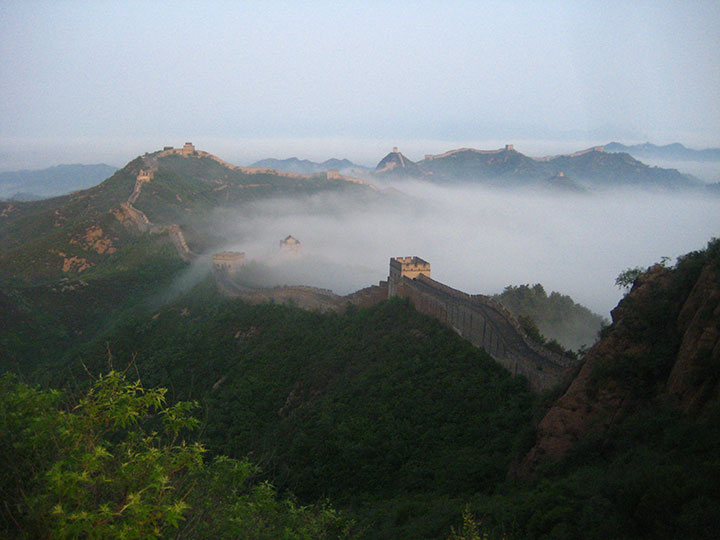
The Great Wall of China is the longest defensive fortification in the world. Despite what you might think, the Great Wall is not an uninterrupted wall, but a series of fortifications built over the course of 1,800 years. The series of walls were meant to protect China from the nomadic armies. The best-known and best-preserved sections of the Great Wall were built during the Ming dynasty (1368-1644).
The Forbidden City, Beijing
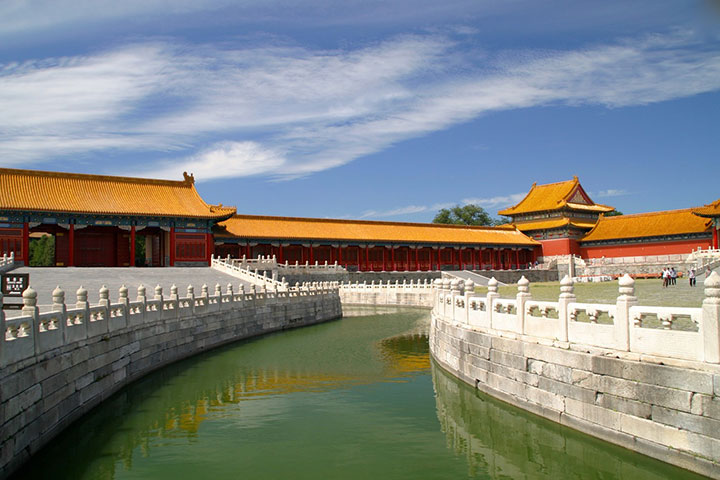
Located in the heart of Beijing, the Forbidden City was home to 14 Ming emperors and 10 Qing emperors during the 500 years of its existence as the capital of the Chinese empire. The Forbidden City’s construction took 14 years to complete. For many centuries Chinese people could only dream of what was inside the Forbidden City’s walls, since access was denied to everyone except for the emperor, his family and his most senior officials and servants. However, it’s status as China’s political center came to an end in 1912, when emperor Puyi abdicated. Nonetheless, Puyi remained in the Inner Court until 1924 when a coup evicted him. In 1925 the Palace Museum was established in the Forbidden City, and was opened to the public. The Forbidden City is the largest palace complex of the world and was recognized by UNESCO as a World Heritage Site in 1987.
The Potala Palace, Lhasa
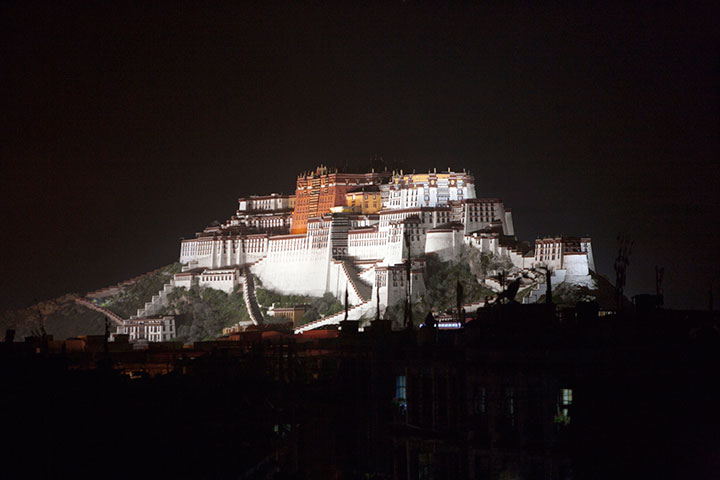
The Potala Palace rises from the Red Mountain in the center of Lhasa Valley at an altitude of 3,700 meters. The complex, which encompasses the White and Red Palaces, symbolizes Tibetan Buddhism.
Mogao Caves, Dunhuang
Also known as “The Caves of the Thousand Buddhas”, the Mogao Caves are situated in the southeast of the Dunhuang oasis, in the Gobi desert, a strategic point along the ancient Silk Route. One thousand years of Buddhist art is contained within the 492 cells and cave sanctuaries, which include wall paintings and over 2,000 painted statues.
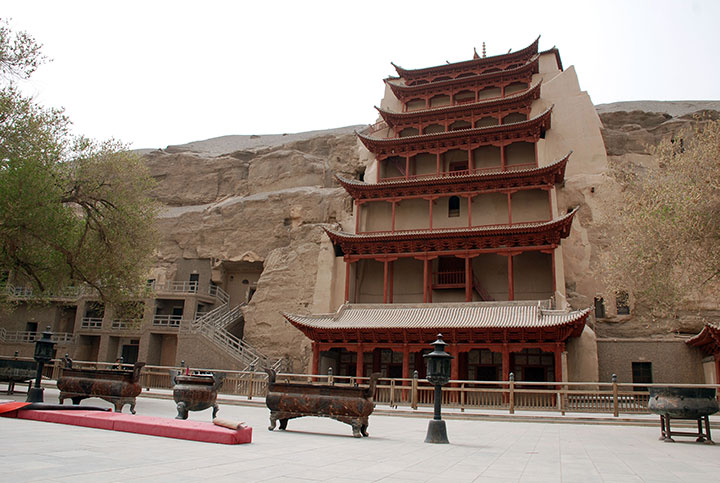
The Mogao Caves are a melting pot of religious, cultural, and intellectual influences. Confucian, Daoist and Christian texts have been found in the caves, as well as documents written in Chinese, Sanskrit, Tibetan, Old Turkish, and Hebrew. The Mogao Caves represent the link between China, Central Asia, India, and Europe.
The Bund, Shanghai
In the beginning the Bund was nothing but an embankment along a muddy waterfront, which is where the Anglo-Indian word ‘bund’ derives from. Numerous banks and consulates settled there, on the north of the old, walled city of Shanghai. The first British company opened an office there in 1846 and in the 160 years since, the Bund has come to represent Shanghai’s unique blend of East and West.
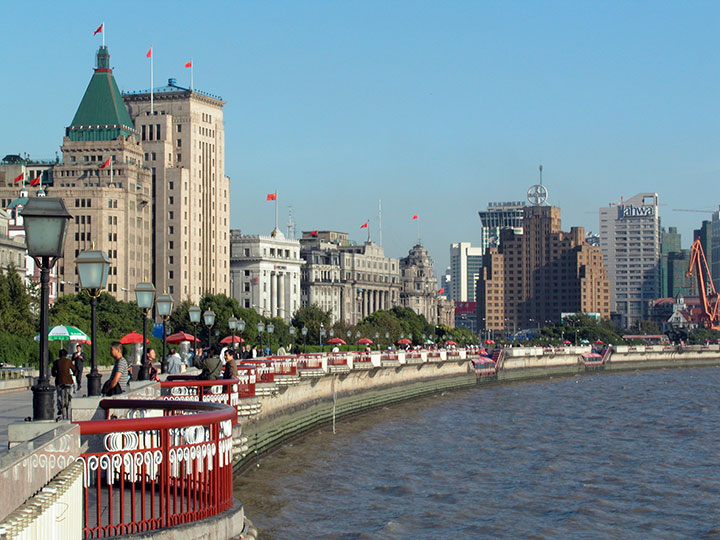
Today, the historic European style buildings sit on the West side of Zhongshan Road; this side is called Puxi. On the Eastern side of the river is Pudong, the area graced by Shanghai’s most modern buildings.
The Shanghai Tower, Shanghai
This is a newcomer to the list of China’s top attractions but is sure to quickly earn its place. The Shanghai Tower was completed in 2015 and simultaneously became the first building in China to surpass 600 meters in height, and became the second highest skyscraper in the world, just behind Dubai’s Burj Khalifa.
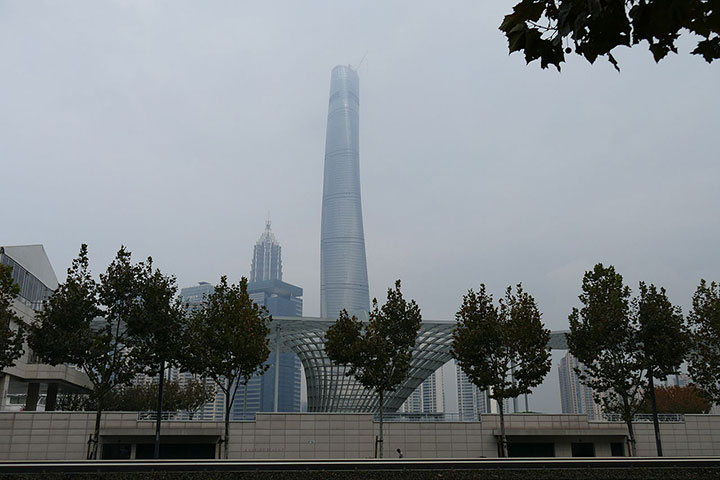
The Shanghai Tower has the world’s highest observation deck, which is open to tourists. The building has 128 floors and its spiral shape symbolizes China’s connection with the world, space, and time. The Shanghai Tower may also be the greenest skyscraper in the world, receiving an LEED Platinum Certification from the U.S. Green Building Council. It collects and reuses rainwater for the heating and air conditioning, and also reduces the need for air conditioning by using double-layered glass.
The Shaolin Monastery, Henan
The Shaolin Monastery, the main temple of Shaolin Buddhism in China, is dedicated to martial arts training and Zen meditation. Established by Emperor Xiaowen of the Northern Wei dynasty in 477 AD, the Shaolin Monastery was built on the north side of the Shaoshi Mountain, one of the seven peaks of the Song Mountains. Shaolin means small forest. It is nestled near the city of Dengfeng in what is now Henan province, in the center of China.
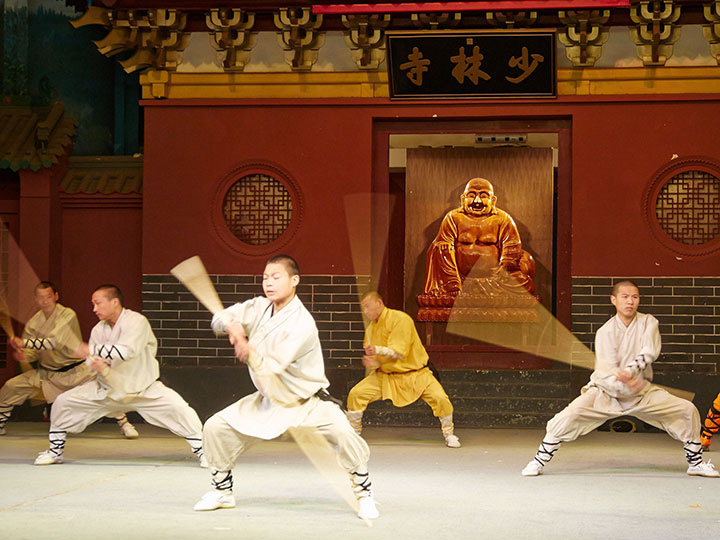
The Shaolin Monastery was irreparably damaged in 1928, when traitor general Shi Yousan burned it for over 40 days. It’s estimated that 90 percent of the Monastery’s buildings, and a countless number of manuscripts, were lost forever in the fire.
However, the Shaolin Monastery survives to this day, and was recognized by UNESCO along with its Pagoda Forest in 2010 as part of the Historic Monuments of Dengfeng.
Longmen Grottoes, Luoyang
The “Dragon’s Gate Grottoes” contain the largest and most impressive collection of Chinese art of the late North Wei and Tang Dynasties (316-907). The Longmen Grottoes are composed of more than 2,300 caves and niches carved into steep limestone cliffs over a one kilometer long stretch, containing almost 110,000 Buddhist stone statues, over 60 stupas, and 2,800 inscriptions carved on steles. All of these works constitute the high point of stone carving in China and represent the cultural sophistication of the Tang.
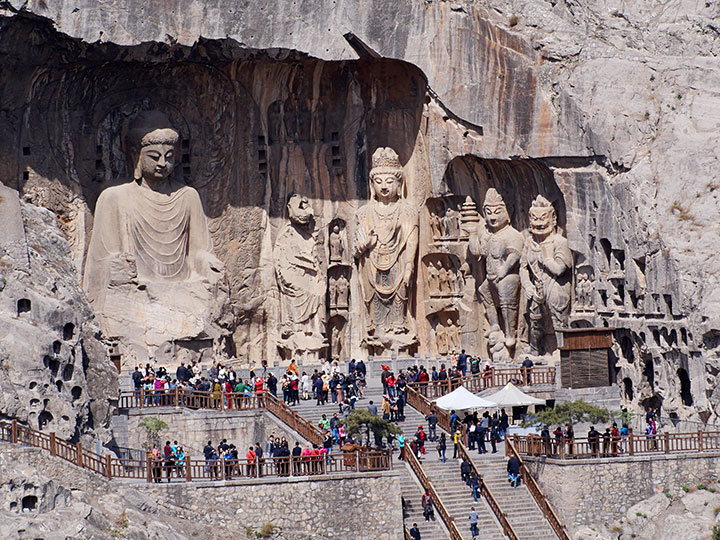
The Longmen Grottoes represent the most harmonious balance between man and nature, and were inscribed upon the UNESCO’s World Heritage List in 2000.
Tulou, Fujian
The people of Fujian first built strongholds on top of mountains to repel the bandits that wrought havoc in southern China during the 12th to 19th centuries. The Tulou evolved from these strongholds. The Tulou are large, rectangular or circular structures with thick walls and a shared courtyard in the center. They are three to five stories high and can house up to 100 families.
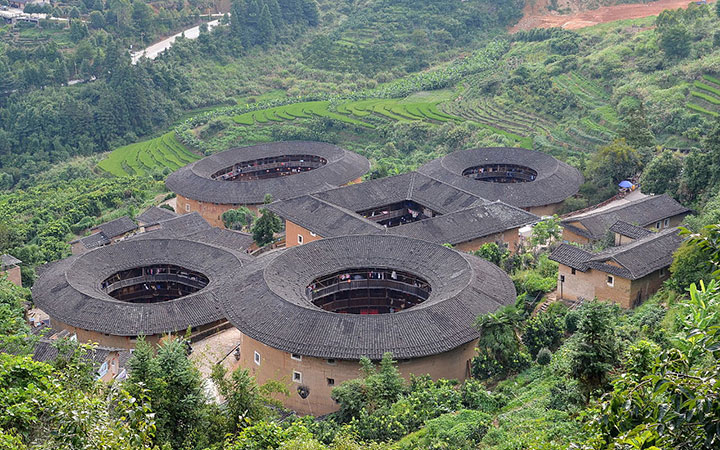
The Tulou were designed to be impenetrable, using only one main gate guarded by 4-5 inch thick wooden doors reinforced with an outer shell of iron plate. The Tulou’s modern residents don’t need to worry about fearsome bandits anymore. These peculiar homes were made a UNESCO World Heritage Site in 2008. ■
Images: © Peter Danford, Pixabay, Wikimedia


